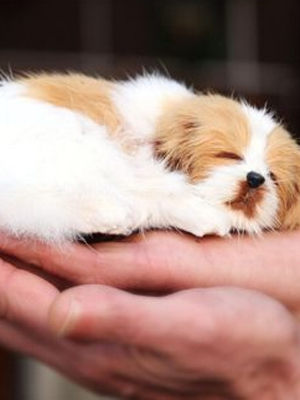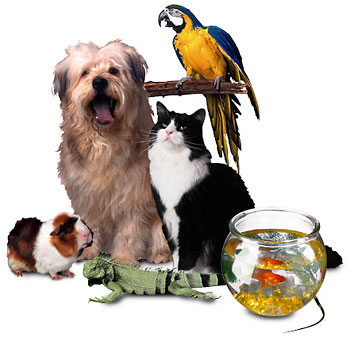 ----------------Tamul paan in Xorai -- symbols of respect-------------------------
----------------Tamul paan in Xorai -- symbols of respect------------------------- Xorai --made of Bell metal
Xorai --made of Bell metal Gamosa-- handwoven towel
Gamosa-- handwoven towel Jaapi--the headgear made of bamboo/Cane
Jaapi--the headgear made of bamboo/Cane .................................... Gamusa with Jaapi...............................
.................................... Gamusa with Jaapi...............................
Assamese lady wearing traditional Mekhala Chador
$$$$$$$$$$$$$$$$$$$$$$$$$$$$$$$$$$$$$$$$$$$$$$$$
Assam can be termed as the mixing pot where culture, heritage, tradition, lifestyle, faith and belief of her Aryan & Non-Aryan, numerous tribes & sub-tribes, Mongoloids & Australoids, drawn from various hives at different points of time have gone into form the Assamese culture - a fascinating and exotic recipe of delightful flavour. The culture of Assam is a rich tapestry infused with multicoloured yarns of distinguished heritage of all the races that populate her.
$$$$$$$$$$$$$$$$$$$$$$$
The People of Assam
$$$$$$$$$$$$$$$$$$$$$$$
The people of Assam are in fact the result of fusion of people from different racial stocks who migrated to Assam down the ages. The Assamese population can be divided into two broad groups :
the non-tribal people who constitute the majority and the tribals.
The Australoids were the first to come to the land; the Mongoloids, came here in a series of migrations from the north, north-east and south-east; and the Caucasoids who came from the west by the valley formed by the Ganges and the Brahmaputra.
Today, the people of the State can be broadly identified and classified as the Non-Tribals or Plains People. The people of the plains generally live in the plains and the Tribals mainly live in the hills. Though, Assam has a valuable tribal population in the plains too.
The state is peopled by a large number of tribal groups; major among them being the Boro-Kacharis, the Deori, the Misings, the Dimassas, the Karbis, the Lalungs, the Rabhas etc. Ahkhomiya or Assamese is the language of Assam. Assam has a reputation for warm hospitality. People of Assam are homely, charming and openhearted.
Bihu, the agricultural festival of Assam is celebrated by all Assamese, irrespective of caste, creed or religion. Bihu, Assam's very own festival come off at various stages of cultivation of paddy, the principal crop of Assam. There are three Bihus that come off at various stages of cultivation of paddy, the principal crop of Assam. They are
Magh (Magha) Bihu (During Jan 13th - Jan 15th)
Bohag (Baisakh) Bihu, (During April 13th - April 15th)
Kati (Kartika) Bihu (Near Diwali)
The Bohaag Bihu marks the New Year at the advent of seeding time, the Kaati Bihu marks the completion of sowing and transplanting of paddies, and the Maagh Bihu marks the end of the harvesting period. Bohaag Bihu is also called the Rongaali Bihu or the Festival of Merriment, Maagh Bihu is also called Bhogaali Bihu or the Festival of Food, Kaati Bihu is also called Kongaali Bihu or the Festival of the Poor.
Of the three Bihu festivals which are secular and non-religious, the Bohaag Bihu ushers in the period of greatest enjoyment and marks the arrival of Spring. The folk songs associated with the Bohaag Bihu are called Bihugeets or Bihu songs. The Bohaag Bihu lasts for several days during which "the young people in the vilalge may be seen moving about in groups gaily dressed or forming circles in the midst of which the prettiest girls dance" .singing songs of love and romance. Such gatherings are called Mukoli Bihus (Open Bihus). The songs are very popular among all sections of the people.
Most of the festivals celebrated in Assam have their root in the varied faith and belief of its people. Diwali, Holi, Durga Puja, Swaraswati Puja, Lakshmi Puja, Kalipuja, Shivaratri are some of the major festivals celebrated by the Hindus of Assam. Those of Islamic faith celebrate Idd and Muharram. Similarly, Christians celebrate Christmas.
Besides the religious and national festivals observed throughout the Country, Assam has a large number of colourful festivals of its own replete with fun, music and dances.
In addition to all this, the tribals of Assam have their own colourful festivals like :
The Kherai Puja of the Bodos
The Baikhu and Pharkantis of the Rabhas
Ali-ai-ligang and Prag by the Missing tribe
The Sagra-misawa wansawa and laghun by the Tiwas.
The Ahomes of Tai origin celebrate Me-Dem-Mehfi.
The Ojapali dances of Non-Vaishnavite origin are usually associated with Manasa - the Serpent Goddess.
Bathow festival is celebrated by the kacharis through sacrifice of goates and chickens.
Assam Art & Crafts- The Boros of the plains in general have an intricate pattern of indigenous dances associated with the primitive rituals like the Kherai Puja.
The Dimasas celebrate Rangi Gobr and Harni gobra at the start of the cropping cycle.
The Deoris observe Bohagiya visu- the Spring time festival.
Ambubasi Mela is held during monsoon at the famous Kamakhya Temple.
Jonbeel Mela is held every year during winter at Jonbeel. The festival is celebrated by the tribes like Tiwa, Karbi, Khasi, Jaintia etc.
From time immemorial, the people of Assam have traditionally been craftsmen. The magic of art of Assamese craftsmen is a common passion inspiring the deep senses with its’ age old simplicity and sophistication. Though, Assam is renown for its exquisite silks, bamboo and cane products, several other crafts are also made here. The colourful Assamese Japi (headgear), terracotta of Gauripur and various decorative items bear witness to the craftsmanship of this land. Assam Handloom is indeed noteworthy offering a mosaic of colours and contours with pleasing motifs and designs. The Eri, Muga (Assamese silk dresses) and typical tribal attires are a treat to the eyes of the beholder. Dance, music, woodwork, pottery, sitalpati or the art of mat making have survived through centuries with fewer changes since it remained an integral part of the locals.
Assam has a rich cultural tradition, which finds detail in several arts and crafts form of Assam. The natural beauty of Assam, is said to be reflected, in them.
Cultural Symbols
$$$$$$$$$$$$$$$$$$$
1) Xorai –
$$$$$$$$$$$$$$$$$$$
The Xorai is a traditional symbol of Assam. In simplistic terms it is an offering tray with a stand at the bottom. There are Xorais with or without a cover on the top.
Tradional xorais are made of bell metal although nowadays they can also be made from brass and/or silver. Hajo and Sarthebari (Xorthebaary) are the most important centres of traditional bell-metal and brass crafts including xorais.
Usage
* As an offering tray for tamul-pan (betel nuts and betel leaves) to guests as a sign of welcome and thanks.
* As an offering tray for food and other items placed in front of the altar (naamghar) for blessing by the Lord.
* As a decorative symbol in traditional functions such as during Bihu dances (modern usage)
* As a gift to a person of honour during felicitations (modern usage)
$$$$$$$$$$$$$$$$$$$
2) Gamosa
$$$$$$$$$$$$$$$$$$$
The Gamosa is an article of great significance for the people of Assam.
It is generally a white rectangular piece of cloth with primarily a red border on three sides and red woven motifs on the fourth (in addition to red, other colors are also used). Although cotton yarn is the most common material for making/weaving gamosas, there are special occiasion ones made from Pat silk.
Usage:
Though it may be used daily to wipe the body after a bath (an act of purification), the use is not restricted to this.
It is used to cover the altar at the prayer hall or cover the scriptures. An object of reverence is never placed on the bare ground, but always on a gamosa.
It is used by the farmer as a waistcloth (tongali) or a loincloth (suriya); a Bihu dancer wraps it around the head with a fluffy knot (see picture).
It is hung around the neck at the prayer hall (naamghar) and was thrown over the shoulder in the past to signify social status.
Guests are welcomed with the offering of a gamosa and tamul (betel nut) and elders are offered gamosas ((referred to as bihuwaan in this case) during Bihu)
$$$$$$$$$$$$$$$$$$$
3)Jaapi:
$$$$$$$$$$$$$$$$$$$
A Jaapi is a traditional Assamese hat.
A typical regular use Jaapi is made out of tightly woven bamboo and/or cane. Decorative jaapis were worn by people of high station in the past. Today decorative jaapis are made with intricate designs made out of cloth (primarily red, white, green, blue and black) that is integrated with the weaving of the jaapi. There is also a typical red border around the edges.
Usage
* Worn over the head as a protection against the elements (sun and rain)
* Offered as a sign of respect in felicitation ceremonies
* Placed as decorative items in and around the house (especially near the front door as a welcome sign)
* A symbol representing Assam
$$$$$$$$$$$$$$$$$$$
4)Mekhela Chador:
$$$$$$$$$$$$$$$$$$$
Mekhela chador is the traditional Assamese dress worn by women.
There are two main pieces of cloth that are draped around the body. The bottom portion, draped from the waist downwards is called the mekhela. It is in the form of a very wide cylinder that is folded into pleats to fit around the waist and tucked in. The top portion if a long length of cloth that has one end tucked into the upper portion of the Mekhela and the rest draped over and around the rest of the body. Invariably there is a blouse that is worn underneath the top half of the body.
$$$$$$$$$$$$$$$$$$$
5)Tamul paan
$$$$$$$$$$$$$$$$$$$
– Betel nut & a leaf given by Assamese on ceremonial occasions, to beg blessings or pardon from elder men in community in Xorais
Traditional Assamese Hindu wedding




Check out the link to have a view of the Traditional Assamese Hindu wedding
http://www-users.cs.umn.edu/~dutta/visitindia/assamese_wedding.html
A Traditional Assamese Hindu wedding ceremony
$$$$$$$$$$$$$$$$$$$
6) Naamghars:
$$$$$$$$$$$$$$$$$$$
Naamghars are places of worship as well as centre for community get togethers and cultural festivals like Bhaonas (Plays depicting tales from Ramayana and Mahabharata) which are very famous and dear to Assamese.











No comments:
Post a Comment